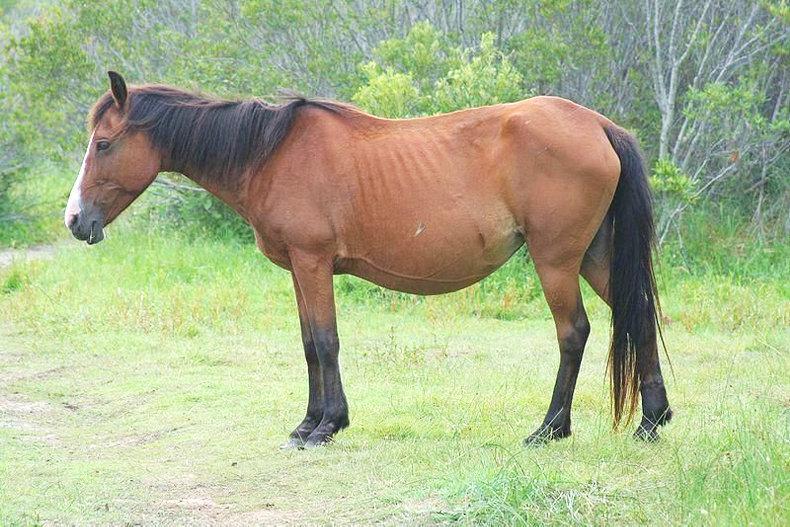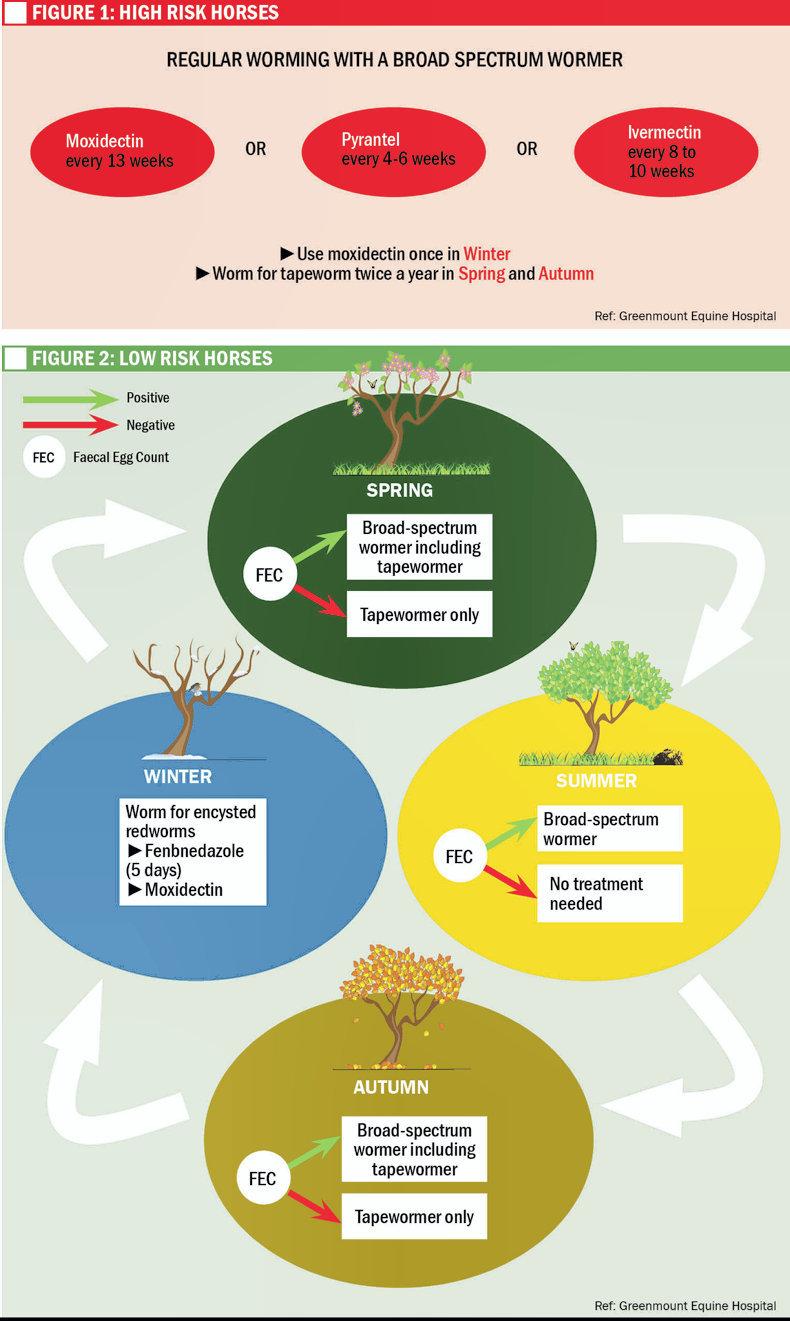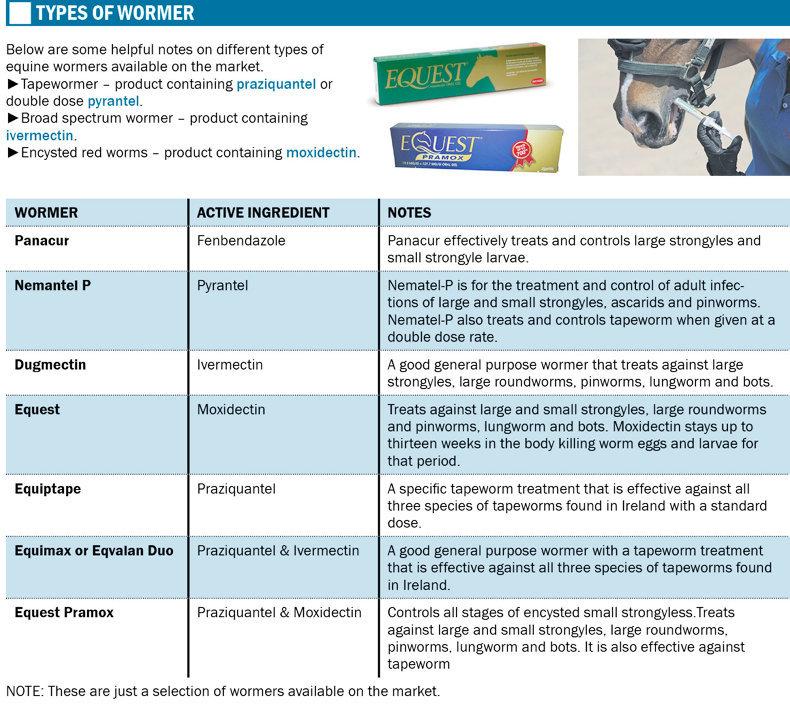LAST month I attended an information day hosted by Greenmount Equine Hospital, a veterinary surgery based at the edge of Limerick Racecourse. The event was aimed at offering horse owners expert and practical advice on key areas of horse management. Some of the topics covered on the day included optimising performance potential, balancing energy requirements with gastrointestinal health and infectious disease control. It was an excellent initiative and was thoroughly enjoyed by all in attendance.
One presentation in particular which I found very helpful was Nicola Walshe’s advice on ‘Targeted de-worming regimes’. Nicola Walshe, MVB, is a Veterinary Practitioner at Greenmount Equine Hospital. Here are some of the main points I took from her presentation.
PARASITE
Worms are parasites which live within, and take nourishment from the horse, its host. All horses will have some degree of worm infestation which is normal and completely harmless. It is only when worm burdens become extensive that they will have a detrimental effect on the horse’s health. Large worm burdens lower the horse’s resistance to infection, rob the horse of valuable nutrients, and in some cases, cause permanent damage to the internal organs.
The lifecycle of most internal parasites involves eggs, larvae (immature worms), and adults (mature worms). Eggs or larvae are deposited onto the ground in the manure of an infected horse. They are swallowed while the horse is grazing, and the larvae mature into adults within the horse’s digestive tract (stomach or intestines). With some species of parasite, the larvae migrate out of the intestine, into other tissues or organs, before returning to the intestine and maturing into egg-laying adults.
There are more than 150 species of internal parasites that can infect horses. The most common are:
THREE TO REMEMBER
Probably the most important, in terms of health risk, are the first three - small strongyles, roundworms, and tapeworms.
Small strongyles burrow into the lining of the intestine and remain dormant, or “encysted” (enclosed in a cyst-like structure), for several months before completing their life cycle. During this time, the larvae are resistant to most dewormers. Small strongyle larvae can cause severe damage to the lining of the intestine, especially when large numbers of larvae emerge from the encysted stage all at once. Colic and diarrhea can occur in heavily infected horses.
Roundworms are most often a problem in young horses (especially foals, weanlings and yearlings). Adult roundworms are several inches long and almost the width of a pencil; in large numbers they can cause blockage (or impaction) of the intestine.
In addition, roundworm larvae migrate through the internal organs until they reach the lungs. They are then coughed up and swallowed back into the digestive tract to complete their life cycle.
Tapeworms can cause colic, ranging from mild cramping to severe colic that requires surgical treatment. The tapeworm life cycle involves a tiny pasture mite as an intermediate host, and horses are at a risk of developing tapeworm infection when they eat this mite in the grass.
SIGNS OF PARASITISM

Common signs of parasitism include the following:
However, it is important for owners to be aware that horses can have large numbers of internal parasites while still appearing to be relatively healthy. That is why it is so important to have a targeted worming programme in place for your horses, this will be discussed in further detail below.
PREVENTATIVE MEASURES
Best practice always starts with prevention. Pasture management is very important in aiding the prevention of worms.
GROUP BY LEVEL OF RISK
When it comes to worming, horses can be separated into two groups (high-risk and low-risk) and then de-wormed accordingly.
High-risk:
For horses that are high-risk Nicola recommended regular worming with a broad spectrum wormer, see figure 1.
Low-risk:

For low-risk horses Nicola recommended a more strategic approach. The strategic dosing approach, Nicola explained, combines the administration of targeted wormers at specific times during the year, along with regular faecal egg counts (see figure 2.).
For more information on faecal egg counts, including pricing, click here.
Given the seasonality of horse parasites, the targeted wormers can be used to disrupt the seasonal cycle and transmission of parasites by reducing parasite egg output and preventing the build-up of larvae on the pasture.
The faecal egg count will indicate the level of adult parasite burden in the horse and, over time will allow a worming history to be built up. It will allow worming treatments to be targeted only to horses with significant worm burdens (i.e. 200 eggs per gram) and will also confirm if the worm control has been effective.
This strategic approach should be effective at reducing the levels of infection in low-risk animals and reducing the number of treatments that are needed which will in turn will help save money and time.
